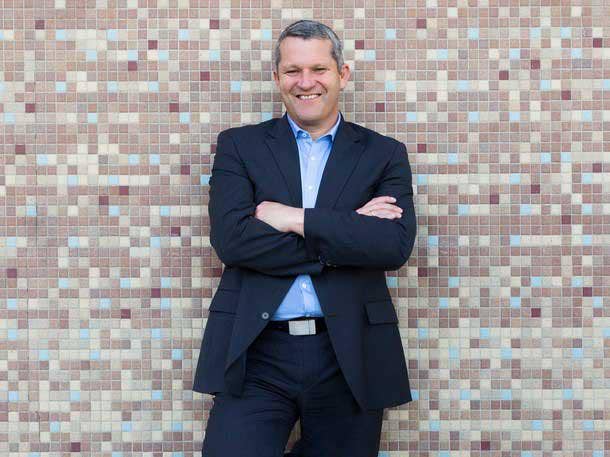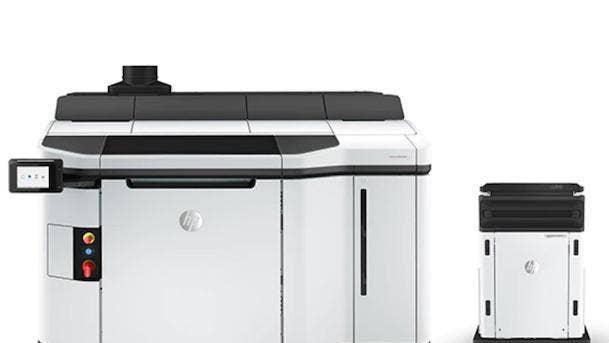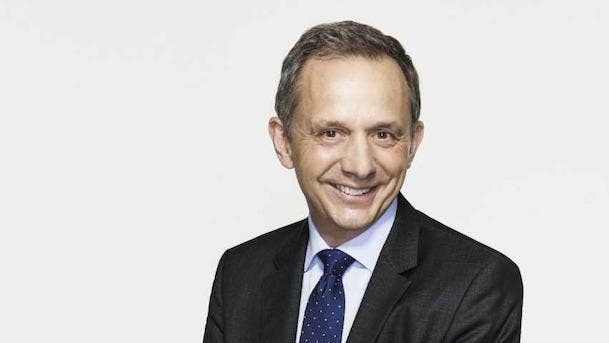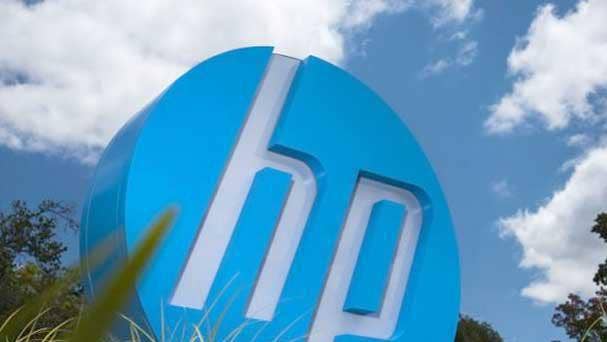HP Chief Commercial Officer On Keeping The Focus On Customers And Partners
Christoph Schell, who became HP's first-ever chief commercial officer in November, says the company is not slowing down, and plans to launch a revised partner program this spring.

Schell On The Record
PC and printer giant HP Inc. has had quite a ride since Nov. 1, when a new leadership team took over and immediately set out to reorganize the company's commercial structure and retool the company's longstanding print business model. As part of the changes, HP executive Christoph Schell became the company's first-ever chief commercial officer, charged with launching the new commercial organization that would shift the company from a three-region organizational structure to a set of 10 geographic markets. However, just days after the Nov. 1 changeover--which also saw Enrique Lores assume the CEO role at HP--news broke that rival Xerox had offered to acquire HP, a deal that would turn hostile in the coming months.
In an interview with CRN, Schell sounded a highly optimistic note about HP's future. The company has remained focused on its strategy--including around expanding contractual services--and has rapidly moved to the new commercial structure, he said. Looking ahead, Schell said HP plans to unveil a revised partner program in May, with enhancements including a "big revamp" in the rewards opportunities for partners, Schell said.
"There's quite some noise in the market right now. There's other companies talking about HP. I just want you to know that this is something that I think is actually quite stimulating," Schell said. Far from slowing HP down, "it has accelerated us," he said.
What follows is an edited portion of the interview with Schell (which took place prior to Xerox's updated takeover offer for HP).

When we last spoke, you were about to launch the new operational model--how has that rollout gone?
We organized our markets from three regions to 10 markets that are reporting into that commercial structure. We did it because we felt the need to consistently show up across the globe, in all of the markets. I'm super happy about how this is coming along. I like the consistency that we have been able to drive from a value proposition point of view to customers, and also to partners. Enrique and I spent some time this week with our Partner Advisory Board, and the feedback that we're getting is that we're easier to deal with. We are more customer-centric. Decisions are taken much faster, and decisions are taken consistently. And so in particular for partners and customers that operate with us across markets, they take a lot of positives out of this. Because it's easier for them to engage with HP. We had to revamp internally how we operate. I've been in the company now for 23 years, and HP has had its fair share of change in 23 years. But one thing that had never changed was the three regions. And the whole business management system was wired with these three regions. We set up a new business management system in record time. Everything that we do--forecasting, how we engage with supply chain, how we launch new products--[we are able to] do that consistently across the globe.
Is the new model helping partners to accelerate their growth with HP?
We're a very partner-centric company and we do well over 80 percent of our revenue through partners. When HP makes strategic changes in product portfolio, in go-to-market innovation, in messaging, the speed in which we can execute is highly dependent on how quickly and how effectively we can communicate with our partners. If you take the new setup that we have, what we've done is removed an entire layer in the company that was standing in between us and the partners. That just resonates with our partners greatly. The feedback is immediate. We see that execution--when we talk about diversity, when we talk about sustainability, when we talk about moving from transactional business models to more contractual, more subscription-based business models, together with partners. We're not doing this directly, we're doing this with partners. The feedback that I've been receiving over the last three months has been superb in that regard. I think partners take a lot of confidence out of that--the fact that we are basically doing what we said we would be doing and that we pulled them with us. I think that the new structural model that we have is helping us greatly. But we're far from done.

How does the new model relate to your partner program?
What we're working on right now is, how does this translate in the future on how we want to interact with our partners? So we are revising our partner program. And we are going to share that in the next two months with our partners before we then launch it on May 1. This is all about HP fostering a relationship with partners that is strong, but also based on data that we exchange between partners and HP to drive value proposition that matters to our customers. We've talked about this "segment of one" strategy, where we basically want to make sure that we understand the future needs of each and every single customer that we have--whether it's in a consumer setting or the commercial setting--and then be able to proactively offer solutions to a future need of a customer. For us at HP it is super important that we understand the customer journey, and that we also understand the usage of our products. Obviously customers need to opt in, in order for us to be able to use that, but I think all of that is a continuum in how we deliver value to those customers. I think that's very promising.
What would be some examples of this "segment of one" opportunity?
For one example, we have an Instant Ink offering in most of our markets where customers can choose whether they want to pay $2.99 a month, or $4.99 or $9.99, and they get an amount of pages per month for that subscription. It is highly popular -- we have loyalty rates of customers well into the 90s. It's a really high retention rate. What we're doing is proactively making sure that they don't run out of ink--maybe in the future on toner as well. But let's assume you opted in, and I get to know your printing patterns a little bit more. I know for example that you have a group of friends or a large family, and before the holidays you want to prepare holiday cards. I can make available to you not just the ink, but I can make available the cards, the envelopes, maybe even the stamps. That's what we are talking about with "segment of one."
We could do the same in a personal systems setting, where we have customers that have variations of CPU usage based on what they are doing. Are they using the laptop for work, for email, or are they using their laptops to play games? We can then offer a service that is scalable based on the usage of that customer. So when we talk about "segment of one." And the only way for us to deliver that is in close interaction with our partners.

With the organizational structure that you have now, does that help to accelerate things like Device-as-a-Service and managed print services?
Absolutely. It comes back to consistency of how we operate. We take a lot of energy out of contractual engagements--they are stickier, and they are more valuable to our customers, to our partners and to HP as well. If you look at what we've been able to achieve on the printing side, where we moved into managed print services many years ago, and now into subscription services--that is scaling. It's scaling profitably for us, and it's also scaling profitably for our partners. The same is happening on the personal systems side.
But on personal systems, customers have been more focused on owning the asset. That is changing. I think that has to do with the purchasing decision makers in companies changing as well--we have a lot more millennials that make these decisions. Owning your equipment is not the No. 1 motivator. The No. 1 motivator is to have flexibility in how you use IT infrastructure, how securely you can use that IT infrastructure. For us as a vendor and for our partners, it is easier to make sure that we show flexibility, and that we always have the latest security updates to a customer, when we have a contractual engagement. It makes it easier for us to engage, it makes it easier for us to consistently deploy technology. That's why we are after contractual engagements.

Are you seeing that many partners are still finding the transition to contractual to be challenging?
I think it's important for partners to make up their mind for how they want to participate. This is not a change that HP is driving--it's a change that our customers are demanding. We are fulfilling a customer need. There are different ways for partners to participate. We have partners on the value-added reselling side that have a real services stack, and have complimentary products that go over and above the products that HP represents. For them, I think it's fairly simple to blend into our strategy. We have partners that are very much focused on go-to-market with HP. We're pulling them with us. We have been designing services and engagement platforms for them to move from a transactional engagement with their customers to a more contractual one. And they're using HP workflow products, HP customer engagement products, to make that happen. We are helping them with the transition. We have partners that have decided, "we don't want to own our own stack, we don't want to use HP's stack. We will focus on another value add." ... I think gone are the days where a partner can operate as a generalist and be good at all aspects of being a generalist. I think most of our partners--not all--but most of our partners have to choose and have to invest deeply into building the right capabilities of what their strategy is. And we are very keen on helping them with that.

For the new partner program, how might it help partners with this transition?
We want to convince our partners that the real value is being part of an outcome-based business impact for customers--and then helping them to understand what this means, and what the options are for them to participate. And then in one-on-one discussions with them, defining how they want to play, and how they want to engage with us. Based on that, we then develop an HP University, where we educate partners and we pull them with us. The other aspect is we obviously have very capable partners out there already, and I spent a lot of time in the last six months talking to them about their capabilities. I'm particularly intrigued about omnichannel capabilities--how does a partner engage with a customer in an omnichannel [approach]? How do they make sure that the engagement is consistent across different touch points? How do they look at the customer journey, between vendor and partner, prior to decision-making? And then also, how do you follow up once a customer has made the decision to buy a product or service from HP or from a partner--how do we make sure that the outcome that we promised is being delivered? There are companies out there that have invested a lot into capabilities. And I think connecting the dots is super important for us. I've been spending the last six months really understanding this well. And it is informing the new partner program that we're currently working on.
How will the new program make working with HP more lucrative for partners?
Obviously we're trying to make this rewarding for those partners. So if a partner invests into a new infrastructure capability, with us or by themselves, and we can participate, we want to reward them. We are rewarding them based on outcome. We are rewarding them based on quality and relevancy of data that they can share with us, very much focused on that customer journey. The program will have a big revamp within the rewards strategy and reward catalog that HP has for partners.

On 3-D printing, do you feel like it's becoming better-appreciated as a major opportunity for HP than it was in the past?
I actually never had the feeling that it doesn't get appreciated. We are the largest commercial user of a science called microfluidics. It's the science of managing and manipulating small volumes of liquid and ink, and we are the largest commercial user globally because of the size of our inkjet business. We looked at this capability and we were like, what else can we do with this? The first one we really jumped into was 3-D printing. What we were able to pull off with Multi Jet Fusion, and what we are going to pull off with the Metal Jet, that is based on microfluidics, and that is IP that we own. It gives us a huge differentiator.
Today the world manufactures parts, and then distributes these parts. And these parts are put into warehouses until there is demand. With digital manufacturing, we ship files around that are digital in nature. And then HP comes in at the intersection of the digital and the physical. We are generating the output for a part where and when required. So the reason why we all need to be a bit patient about this is that the disruption is fundamental in how the world is manufacturing today. But the impact is absolutely huge.
There are sustainability benefits for this way of manufacturing, as well?
If you look at the carbon footprint that mankind is responsible for, one-third of this carbon footprint is manufacturing-related. I believe that digital manufacturing and 3-D printing will have a material impact on reducing that carbon footprint. So by us being a player there, I think it's a great thought leadership role that we can take from a sustainability point of view, and really have a material impact on carbon footprint stemming from manufacturing. But it's something that takes time. It's not something that HP will do by itself … It all takes time, but I think it's very promising.

For the print business model change that Enrique (pictured) and others have talked about, is that still in the pipeline?
Absolutely. We want to make printing accessible. We want to make printing affordable. We want printing to be a productive tool for our customers. I think what has happened over the years is that the value proposition of print has changed. There are three components to print--you have hardware, you have supplies, and you have services. All three of them play a major role in getting a complete value proposition across to a customer. Because of competitive developments, the equation is changing in how you think about these three, and I think that's what we're reacting to. We are looking at, how can we play differently? I talked a little bit about Instant Ink--that is one way to make a printing value proposition available to a customer. Another change we are driving is, how can we get customers that today don't like the price that they have to pay for supplies--how can we solve that for them? That's what we're after. You will hear more from us later in the year. But it's definitely something that we haven't dropped--quite the contrary, we're quite advanced from an engineering point of view. And my team and I are responsible to think about the value prop for customers, and how we plan to bring this to market. But we are absolutely on track to make this happen this year.

What else have we not talked about that would be worth discussing?
You know, there's quite some noise in the market right now. There's other companies talking about HP. I just want you to know that this is something that I think is actually quite stimulating. I'm German, and I've been living now in the U.S. for six years. There's something I learned in this U.S. culture, and it is the ability to view a challenge as an opportunity. And for me, to be quite honest, that noise is really cool. Because I have a lot of reasons to engage with customers and partners--so do the other 55,000 employees of HP. And it's a very simple formula. If we speak to our partners and customers, nobody else does. And so I think that the last three months have been really cool, really stimulating--a lot of meaningful conversations with partners, with customers. And I really feel that we're winning. So I think, for what it's worth, I like the last three months, and I like that noise in the market. It is helping us.
It hasn't slowed you down at all?
No, it has accelerated us.